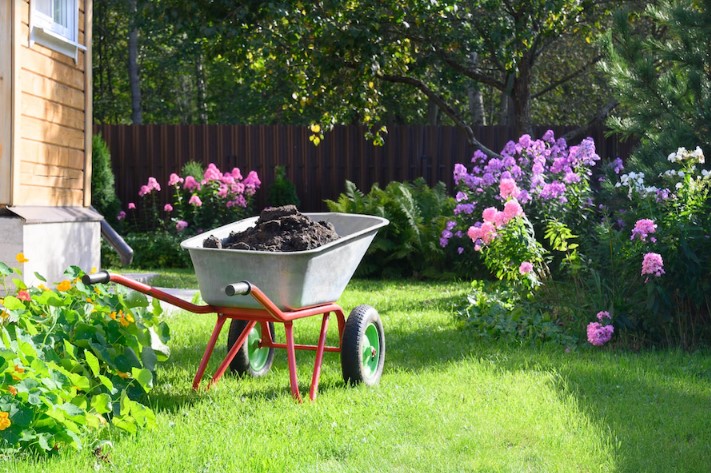
Creating and maintaining a beautiful lawn and garden is an art that requires dedication, knowledge, and the right tools. A lush, green lawn and vibrant garden not only enhance the aesthetic appeal of your home but also contribute to a healthy environment. In this comprehensive guide, we will delve into the essential practices for lawn and garden care that will help you achieve a stunning outdoor space.
Understanding Your Soil
Soil Testing and Preparation
The foundation of a thriving lawn and garden lies in the soil. Conducting a soil test is crucial to understand its composition, pH level, and nutrient content. This information helps in selecting the right plants and fertilizers. Amend your soil based on the test results. Add organic matter like compost to improve soil structure, enhance drainage, and increase nutrient retention.
Soil Aeration
Aeration is the process of perforating the soil with small holes to allow air, water, and nutrients to penetrate the grassroots. This helps roots grow deeply and produce a stronger, more vigorous lawn. Aerate your lawn in the growing season when the grass is actively growing to achieve the best results.
Choosing the Right Grass and Plants
Grass Varieties
Selecting the right grass variety is essential for a healthy lawn. Different grasses thrive in different climates and soil types. Common varieties include:
- Bermuda Grass: Ideal for warm climates, drought-resistant.
- Kentucky Bluegrass: Prefers cooler climates, known for its rich color and texture.
- Zoysia Grass: Versatile, tolerates heat and shade, low maintenance.
- Fescue Grass: Good for cooler regions, shade-tolerant.
Plant Selection
For your garden, choose plants that are well-suited to your climate and soil. Native plants are an excellent choice as they are adapted to local conditions and require less water and maintenance. Consider a mix of perennials, annuals, shrubs, and trees to create a diverse and visually appealing garden.
Proper Watering Techniques
Lawn Watering
Watering your lawn properly is critical for its health. Overwatering can lead to shallow roots and disease, while underwatering can cause stress and browning. Follow these tips for effective lawn watering:
- Timing: Water early in the morning to reduce evaporation and allow grass to dry before evening, preventing fungal diseases.
- Frequency: Water deeply and infrequently, about once a week, providing 1 to 1.5 inches of water.
- Method: Use a sprinkler system or a hose with a gentle spray nozzle to distribute water evenly.
Garden Watering
Different plants have varying water needs. Group plants with similar requirements together (a practice known as hydrozoning) to ensure efficient water use. Mulching around plants helps retain moisture and reduce the need for frequent watering. Drip irrigation systems are highly effective for garden beds, delivering water directly to the roots.
Mowing and Maintenance
Lawn Mowing
Regular mowing is essential for a neat and healthy lawn. Follow these guidelines for optimal results:
- Height: Set your mower to the appropriate height for your grass type. Generally, keep grass between 2.5 to 3.5 inches tall.
- Frequency: Mow regularly, but never remove more than one-third of the grass blade in a single mowing.
- Clippings: Leave grass clippings on the lawn as they decompose and return valuable nutrients to the soil.
Garden Maintenance
Maintaining your garden involves regular tasks such as weeding, pruning, and deadheading. Weeds compete with your plants for nutrients and water, so remove them promptly. Prune shrubs and trees to maintain their shape and health, and deadhead flowers to encourage more blooms.
Fertilization and Pest Control
Fertilizing Your Lawn
Fertilization provides essential nutrients that promote healthy growth. Use a balanced fertilizer with the appropriate ratio of nitrogen, phosphorus, and potassium. Apply fertilizer during the growing season, typically in spring and fall, following the recommendations based on your soil test results.
Organic Options
Consider organic fertilizers, such as compost or manure, which improve soil health over time. They release nutrients slowly and reduce the risk of nutrient runoff into waterways.
Pest and Disease Management
A healthy lawn and garden are less susceptible to pests and diseases. However, if issues arise, use integrated pest management (IPM) strategies that combine biological, cultural, and chemical controls. Encourage beneficial insects like ladybugs and predatory beetles to naturally reduce pest populations. Use pesticides as a last resort and choose eco-friendly options when possible.
Seasonal Care Tips
Spring
- Aerate and fertilize your lawn.
- Plant new flowers and shrubs.
- Apply mulch to garden beds.
- Check irrigation systems for proper function.
Summer
- Water deeply and infrequently.
- Mow regularly and adjust mowing height.
- Monitor for pests and diseases.
- Harvest vegetables and fruits as they ripen.
Fall
- Overseed and fertilize your lawn.
- Plant bulbs for spring blooms.
- Rake leaves and add them to compost.
- Prune shrubs and trees as needed.
Winter
- Reduce watering frequency.
- Protect plants from frost.
- Clean and store garden tools.
- Plan and prepare for the upcoming growing season.
Sustainable Gardening Practices
Composting
Composting is an eco-friendly way to recycle organic waste into valuable soil conditioner. Use kitchen scraps, grass clippings, leaves, and garden trimmings. Turn the compost pile regularly to aerate it and speed up the decomposition process.
Rainwater Harvesting
Collecting rainwater for irrigation reduces the demand on municipal water supplies and lowers your water bill. Install rain barrels under downspouts to capture runoff from your roof.
Native Plants and Pollinators
Incorporate native plants and pollinator-friendly flowers to support local wildlife and biodiversity. These plants are adapted to local conditions and attract beneficial insects like bees and butterflies.
By following these expert tips and practices, you can create and maintain a beautiful, healthy lawn and garden that will be the envy of your neighborhood. Consistent care, attention to detail, and sustainable practices will ensure your outdoor space thrives throughout the seasons.
